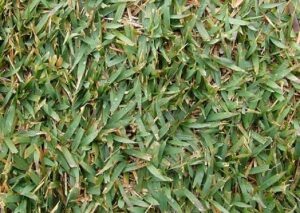Spring Lawn Care
go.ncsu.edu/readext?851266
en Español / em Português
El inglés es el idioma de control de esta página. En la medida en que haya algún conflicto entre la traducción al inglés y la traducción, el inglés prevalece.
Al hacer clic en el enlace de traducción se activa un servicio de traducción gratuito para convertir la página al español. Al igual que con cualquier traducción por Internet, la conversión no es sensible al contexto y puede que no traduzca el texto en su significado original. NC State Extension no garantiza la exactitud del texto traducido. Por favor, tenga en cuenta que algunas aplicaciones y/o servicios pueden no funcionar como se espera cuando se traducen.
Português
Inglês é o idioma de controle desta página. Na medida que haja algum conflito entre o texto original em Inglês e a tradução, o Inglês prevalece.
Ao clicar no link de tradução, um serviço gratuito de tradução será ativado para converter a página para o Português. Como em qualquer tradução pela internet, a conversão não é sensivel ao contexto e pode não ocorrer a tradução para o significado orginal. O serviço de Extensão da Carolina do Norte (NC State Extension) não garante a exatidão do texto traduzido. Por favor, observe que algumas funções ou serviços podem não funcionar como esperado após a tradução.
English
English is the controlling language of this page. To the extent there is any conflict between the English text and the translation, English controls.
Clicking on the translation link activates a free translation service to convert the page to Spanish. As with any Internet translation, the conversion is not context-sensitive and may not translate the text to its original meaning. NC State Extension does not guarantee the accuracy of the translated text. Please note that some applications and/or services may not function as expected when translated.
Collapse ▲Written by: Aimee Jarrels, Extension Master Gardener Volunteer of Pender County
Tips For Spring Lawn Care
Spring arrives with the first blooming daffodils and crocuses. This also means that you should gear up, put on your gardening gloves and boots, and get to work. If you want a flourishing and green lawn shining under the spring-summer sun, you’ll have to put in the work and start preparing your lawn for the season. Here are a few tips to help get you started on your spring lawn care.
Get Out The Rake
Raking is the first chore to start your lawn preparation. While there may not be any fallen leaves after last year’s autumn and winter, raking does much more than a bit of leaf clean-up. Raking also removes twigs, dead grass and weeds, and other unwanted objects that may be lying in your backyard. After the fallen autumn leaves have partially decomposed among other organisms, the winter cold prevents microorganism activity, which means a layer of thatch will begin to grow. Once spring arrives, raking the ground will help remove any thatch developed, the layer of undecomposed debris, and plant residue. Removing the dead turfgrass will allow the soil beneath to breathe freely and promote the growth of good microbes that will improve the soil’s health. You can also chop leaves up with your lawn mower and leave them on the lawn for added nutrients for the soil.
Tillage If Needed
Tillage is the practice of overturning the top layer of soil using a tool like a spade. This is done to aerate the soil, promote the growth of good bacteria and organisms, break clod, improve texture and structure of the soil, remove moss and weeds, and even improve the water penetration ability of the soil. A lawn aerator may also be used to aerate the soil for the same. However, the process may not always be necessary and in some cases over tilling may even cause a loss in the fertility of the soil and top layer through erosion. Aeration may even cause the growth of weeds.
Assessing The Soil
Soil sampling and soil testing is a great way to know more about your lawn, the nutrients lacking, what plants will grow the best, and what you need to improve the quality of the soil. pH plays a major role in the growth of microorganisms and the establishment of plants. According to the results, soil and fertilizer recommendations are given for better productivity for your lawn.
Fertilizers
Before you sow your summer plants, your lawn needs to be fertilized. A topdressing with compost or mulch will boost the nitrogen levels of the soil as well as other essential nutrients. For a fast-acting solution, chemical fertilizers can be applied depending upon the plant requirement.
Herbicides
Spring care also means taking up weed prevention measures to foster healthy plant growth. Herbicides can be used to avoid weeds in lawns. Depending on the nature of weeds, annual or perennial, a pre-emergent herbicide or a post-emergent herbicide can be used, respectively. Others may require the application of both types of herbicides.




